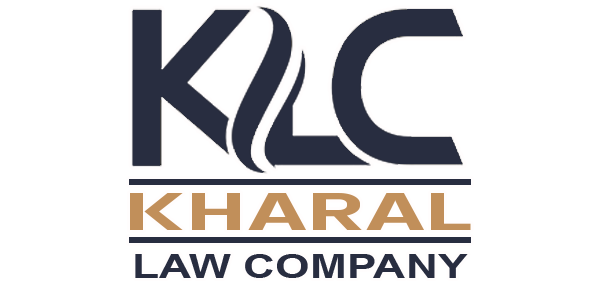Содержание
It’s structured and relatively easy to understand , yet it provides a holistic, centralized view , making it much easier to use that data however you need . Like a data lake, a data warehouse centralizes your data, but as we’ve established, it’s well-organized and set up for efficient analysis. It’s a single source of truth for all data that’s easier to understand and navigate.
- To work with geospatial data, consider integrating PostgreSQL with the PostGIS extension.
- A robust BI architecture describes various layers and components with different capabilities that produce dashboards and reports.
- Note that some of these providers also accommodate on-premises data warehouses.
- In two-tier architecture, a data mart level is added between the user interface and EDW.
- This allows it to be easily compared and analyzed from a single console.
Data warehouses can hook right up to source data, but nowadays, we’re seeing more and more companies use their data warehouse as a layer on top of their data lake. Following Dixon’s comparison, if a data lake is the water/data in its natural, unorganized state, a data warehouse is where you treat it and make it ready for consumption. Companies use data warehouses to manage transactions, understand their data, and keep it all organized. In short, data warehouses make large amounts of information more usable for organizations of all sizes and types. New sources of valuable data are becoming available routinely, but they require consistent management as part of a data warehouse.
Cloud-based BI tools — platforms that let you connect to data warehouses, create visualizations and dashboards and share them with collaborators. MicroStrategy is an enterprise business intelligence application software. This platform supports interactive dashboards, scorecards, highly formatted reports, ad hoc query and automated report distribution. Flex One is the most basic tier, which gives users a single-partitioned instance.
Through its DataServices functionality, it allows to quickly turn data pipelines into REST API endpoints. The platform allows to easily scale your data job across multiple cores or nodes/machines. Supports Docker/Kubernetes deployments and offers AWS/Azure images in their respective marketplaces. The primary benefit of data warehouse software is that it makes your processes more efficient. To avoid purchasing the wrong solution and wasting your resources, review these key considerations.
The system employs parallelism and columnar processing to boost performance and scalability. MarkLogicprovides a NoSQL database system with powerful querying and versatile application services. The schema-agnostic platform lets you ingest data of any form or type, as is. Supported formats include geospatial data, JSON, RDF, and massive binaries like videos. Its built-in search engine simplifies querying once you’ve loaded data. It enables you to start asking questions and getting answers right away.
Top 8 Zero Trust Network Access Products For Small Businesses
A typical data warehouse includes the three separate layers above. Today, modern data warehouses combine OLTP and OLAP in a single system. A data warehouse preserves, standardizes, and stores data from various sources, which aids in consolidating and integrating the data. Company executives can also query the data in the data warehouse themselves without IT support, which saves time as well as money. PeerSpot’s crowdsourced user review platform helps technology decision-makers around the world to better connect with peers and other independent experts who provide advice without vendor bias.
Data warehousing teams traditionally have used a wide variety of data warehousing tools as they work through the stages of the data warehousing lifecycle to deliver warehousing projects. With every stage, a new software or data warehousing tool was required. Data warehouse automation software provides teams with much broader, far-reaching capabilities and benefits and unites the entire data warehousing lifecycle within one solution. Download our free cloud data management ebook and learn how to manage your data stack and set up processes to get the most our of your data in your organization.
(PL, pgSQL, PL/python, etc.) It serves as a low-cost, straightforward, and efficient data warehousing solution. SAP is an integrated data management platform, to maps all business processes of an organization. It is an enterprise level application suite for open client/server systems.
What Are Data Warehouse Tools?
Also engage data service providers to complete your data strategy and obtain the deepest, data-driven insights possible. The system is flexible and supports scheduled logistic processing inside the data warehouse. The suite of tools includes Data Visualization, Hue, and Workload XM, which makes it easy to explore, visualize, and query datasets as well as optimize workload health. It helps you secure, govern, and manage all your data and metadata, whether it’s on private clouds, public clouds, or hybrid clouds.
It supports and ingests data of all shapes, sizes and sources, dynamically transforms and prepares this data, and transports it to the output of your choice. Logstash is extensible, with over 200 plugins available to let you create and configure your pipeline how you choose. Leverage prebuilt industry Data lake vs data Warehouse and Line of Business content, templates, data models, and integrations with SAP and third-party data sources and data lakes. Running on the Cloudera Data Platform , the data hub secures and provides governance for all data and metadata on private clouds, multiple public clouds, or hybrid clouds.
Instead, EDW can be connected with data sources via APIs to constantly source information and transform it in the process. So, all the work is done either in the staging area , or in the warehouse itself. Other important criteria include the variety of supported data, structured and unstructured, and how they co-exist among various big data solutions. There are options where a data warehouse would have the capability to integrate or support other data management solutions.
If you’d like to learn more, check out our detailed resource on ETL, ELT, and even ETLT. At its core, business intelligence is the ability to answer complex questions about your data and use those answers to make informed business decisions. The administration edition allows for the administrators to define how the data is presented to the users.
Best Data Warehousing Tools And Resources
Informatica is a data integration and management technology from Informatica Corporation that is used to get business insights. The information contained in the destination systems, source systems, and transformations is referred to as metadata information. Cloudera is the industry’s first enterprise data cloud or multi-functional analytics built on a platform that breaks down silos and accelerates the creation of data-driven insights. In shared data instances, it applies consistent security, governance, and metadata. Micro Focus Vertica is a big data analytics platform built for data warehouses and other big data workloads where speed, scalability, simplicity, and openness are key for success.
Conversely, a data warehouse performs OLAP to analyze data in order to present it to your queries. BI Tools are software applications that facilitate BI analysis by creating visualizations and reports as well as enabling OLAP . Data warehouses are another facet of a BI toolset and are concerned specifically with aggregating data. While the data across industries may vary, the solutions — along with Informatica’s best practices — ensure security alongside powerful data warehouse management. Hive metastore enables you to apply a table structure onto large amounts of unstructured data.
Data Warehousing Software For Windows
It offers 100% visual development, is operational, and monitors the environment. The cost varies from the size of the data and the number of queries run. It offers the ability to schedule and run your data processes. It is cost-effective and continues to be a relevant choice for data scientists.
The data warehouse now contains the information it retrieved from the database, but it won’t update automatically as new information comes in. Data warehouses can draw information this way from a variety of databases to condense it for user queries. There tends to be some confusion in the industry concerning the differences between business intelligence tools and data warehousing .
PostgreSQL is a popular open-source data warehouse tool that uses its built-in features and analytics tools to store, integrate, and analyze data. Multiple languages can be used to create procedures and functions. (PL/python, pgSQL, etc.) It’s a low-cost, easy-to-use, and effective data warehousing solution. IBM Db2 Warehouse is a cloud data warehouse that allows for autonomous data storage and processing scaling. IBM Db2, which includes the Db2 relational database, is a data management software from IBM. Its purpose is to efficiently store, analyze, and retrieve data.
On Oracle Cloud Exadata is run on pre-configured hardware combined with software . You can use Exadata as a data warehouse based on its high-performance hardware configuration. An open-source tool with distributed data processing , but the processing takes place in RAM, making it much quicker. Redshift is very effective because of “massively parallel processing, columnar data storage, and very efficient, targeted data compression encoding schemes”. There’s a lot to be gleaned from data processing – if only it was simpler .
It supports nearly unlimited amounts of data storage, data sources, and concurrent users. SnowflakeSnowflake is a cloud-based Data Warehouse Tool that provides a faster, easier-to-use, and more flexible framework than other data warehouses. Since Snowflake runs completely in the cloud, it offers a complete SaaS architecture.
Make The Most Of Your Data Warehouse With Weld
The cloud-based data warehousing tools are fast, efficient, highly scalable, and available based on pay-per-use. While BI outputs information in the form of intuitive visualizations, dashboards and reports, data warehouses outline information in dimension and fact tables for use in BI tools. Metadata management, data distribution, storage management, recovery and backup are some data warehousing capabilities. BI functions include creating intuitive visualizations and dashboards, reporting, predictive analytics and modeling, data mining and more. By contrast, a data lake is a central repository for all types of raw data, whether structured or unstructured, from multiple sources.
Some people conflate them into a single term – BIDW (Business Intelligence/Data Warehouse) – and consider them to fundamentally be the same thing. DWaaS, an offshoot of database as a service, provides a managed cloud service that frees organizations from the need to deploy, configure and administer their data warehouses. Such services are being offered by a growing number of cloud vendors. While the value of handling unstructured data is high, data warehouses are steadfast.
The Biggest Fish In The World Of Data Warehousing
Of course, security and compliance for regulated organizations need support for data access control, masking, and auditing. In the end, we see how crucial it is for businesses to use data warehousing tools. We have seen some of the best examples of data warehouse automation tools.
It is used as a primary data storage or data warehouse for many applications, including mobile, web, geospatial, and analytics applications. PostgreSQL allows the data warehouse to analyze, transform, model, and deliver the data in a database server, making it both flexible and intelligent. In short, it helps developers to create applications, and managers to create fault-tolerant environments for their data and protect data integrity. It also helps with managing your data, regardless of how large or small the dataset may be. The fully-managed platform can process petabytes of data in seconds.
ETL is three combined processes, common in data warehousing, used to pull data from one database and transfer it to another database. The process of extracting data, transforming it into the proper format and loading https://globalcloudteam.com/ it into its destination database can be lengthy, labor intensive and unreliable. The first step in the construction of a data warehouse concept is to transfer an existing on-premises warehouse and to the cloud.
Things To Consider When Selecting A Data Warehouse Tool
Stitch, a lightweight ETL tool, pulls together multiple data sources , transforms or cleans the data, and lets you configure the data pipeline with its UI. IBM data Stage is a business intelligence tool for integrating trusted data across various enterprise systems. It leverages a high-performance parallel framework either in the cloud or on-premise. This data warehousing tool supports extended metadata management and universal business connectivity. Astera DW Builder is an end-to-end data warehousing tool that enables business users to design, develop, and deploy high-volume data warehouses using a metadata-driven approach. The solution offers a comprehensive data model designer and robust ETL/ELT capabilities that simplify deployment of a data warehouse on-premises or in the cloud.


